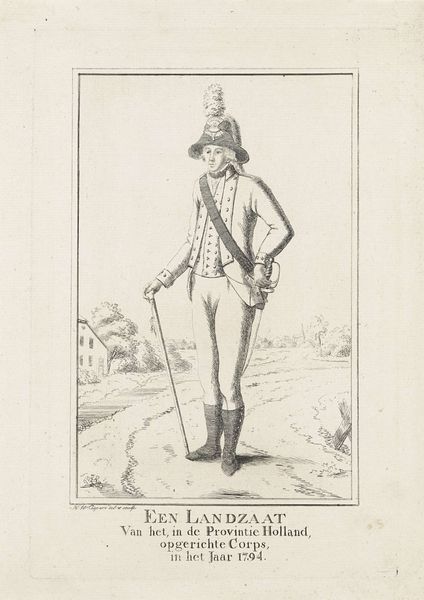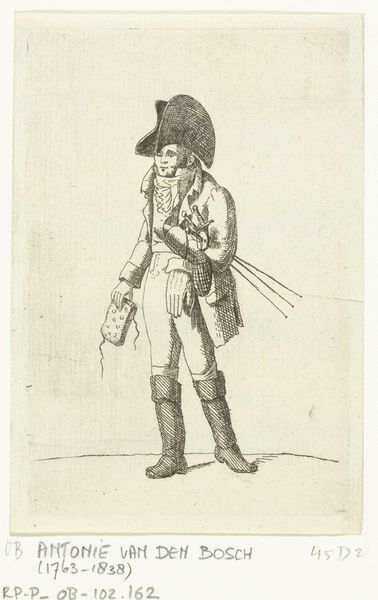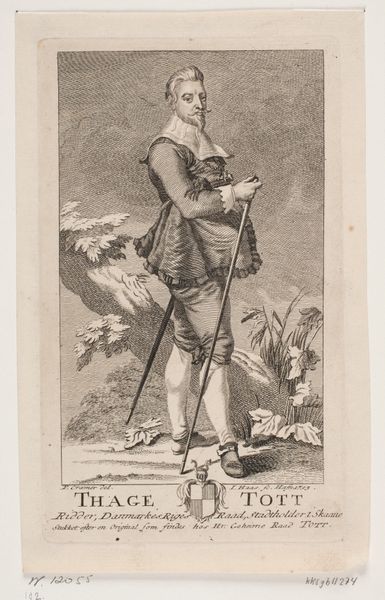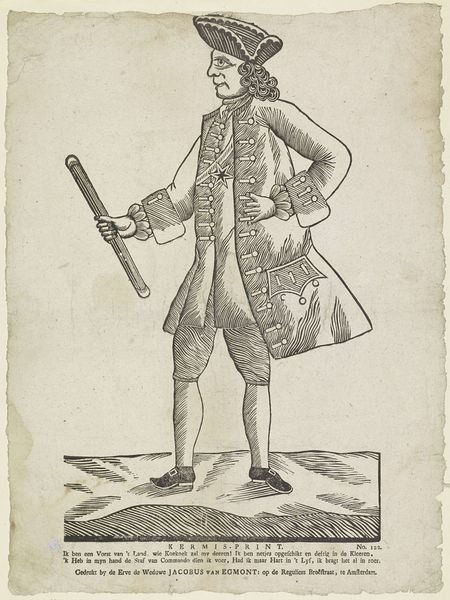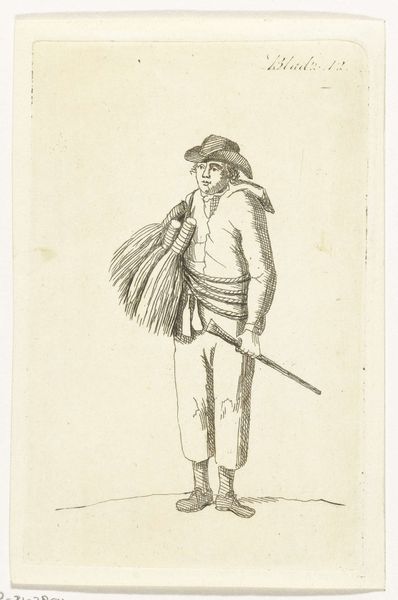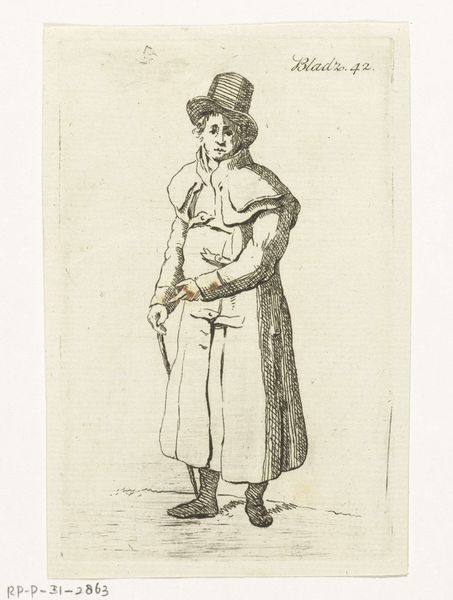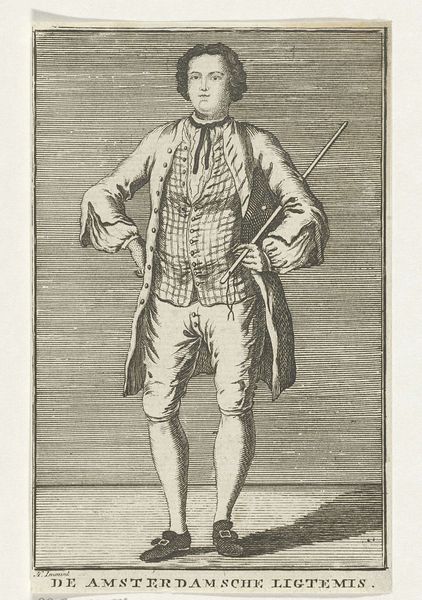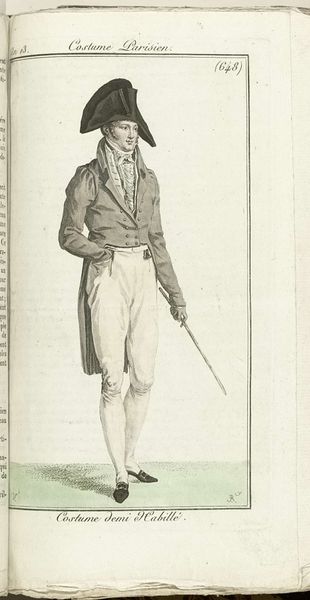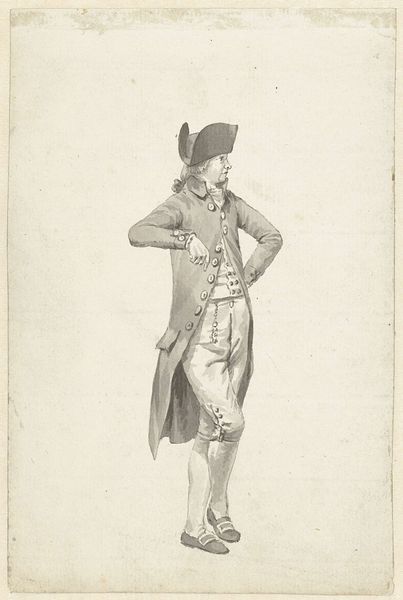
drawing, ink, pen
#
portrait
#
drawing
#
neoclassicism
#
figuration
#
ink
#
ink drawing experimentation
#
pen-ink sketch
#
pen
#
realism
Dimensions: height 120 mm, width 80 mm
Copyright: Rijks Museum: Open Domain
Curator: This ink drawing, "Staande man met brilletje en wandelstok," or "Standing Man with Spectacles and Walking Stick," was created by Anthonie van den Bos sometime between 1778 and 1838. Editor: It’s the angle of the hat for me. Somehow both rakish and completely unsure. Is it a signifier of power, held almost too preciously? Curator: I find the linework most striking. Notice the artist’s adept use of hatching and cross-hatching to delineate form, creating depth and volume with simple pen strokes. Consider how this emphasis contributes to the overall composition, a carefully structured Neoclassical portrait despite its sketch-like quality. Editor: Well, let's think about the late 18th century. The power of observation afforded by spectacles would have been limited to a select few—scholars, perhaps, or emerging bourgeoisie—further indicated by the inclusion of a cane and hat as items of fashion. Does this become an almost satirical study of privilege through its emphasis of careful observation, when those things were already afforded to this person because of their identity and position? Curator: That's an interesting take. While one might find elements of social commentary, I think the artist's focus remains primarily on representational accuracy, carefully rendering textures and surfaces through controlled and deliberate lines. This technique elevates a simple genre portrait. Editor: But by representing this person so literally, by capturing details of attire and expression that would communicate his societal place, the drawing also becomes a historical document of class structures during the Dutch Enlightenment and French revolutionary periods. Think of what it means to portray someone as worthy of depiction. Curator: A worthy point! Van den Bos encapsulates the spirit of realism by turning towards observation. I see, however, that the subject here becomes a meditation on representation. Editor: It does make you question how much an artist is truly just rendering. I think with historical works we bring so much contemporary understanding. I guess, with any artwork, context deepens our interpretations. Curator: It is like viewing an artifact through dual lenses—both our own, and those of history and artistry.
Comments
No comments
Be the first to comment and join the conversation on the ultimate creative platform.

